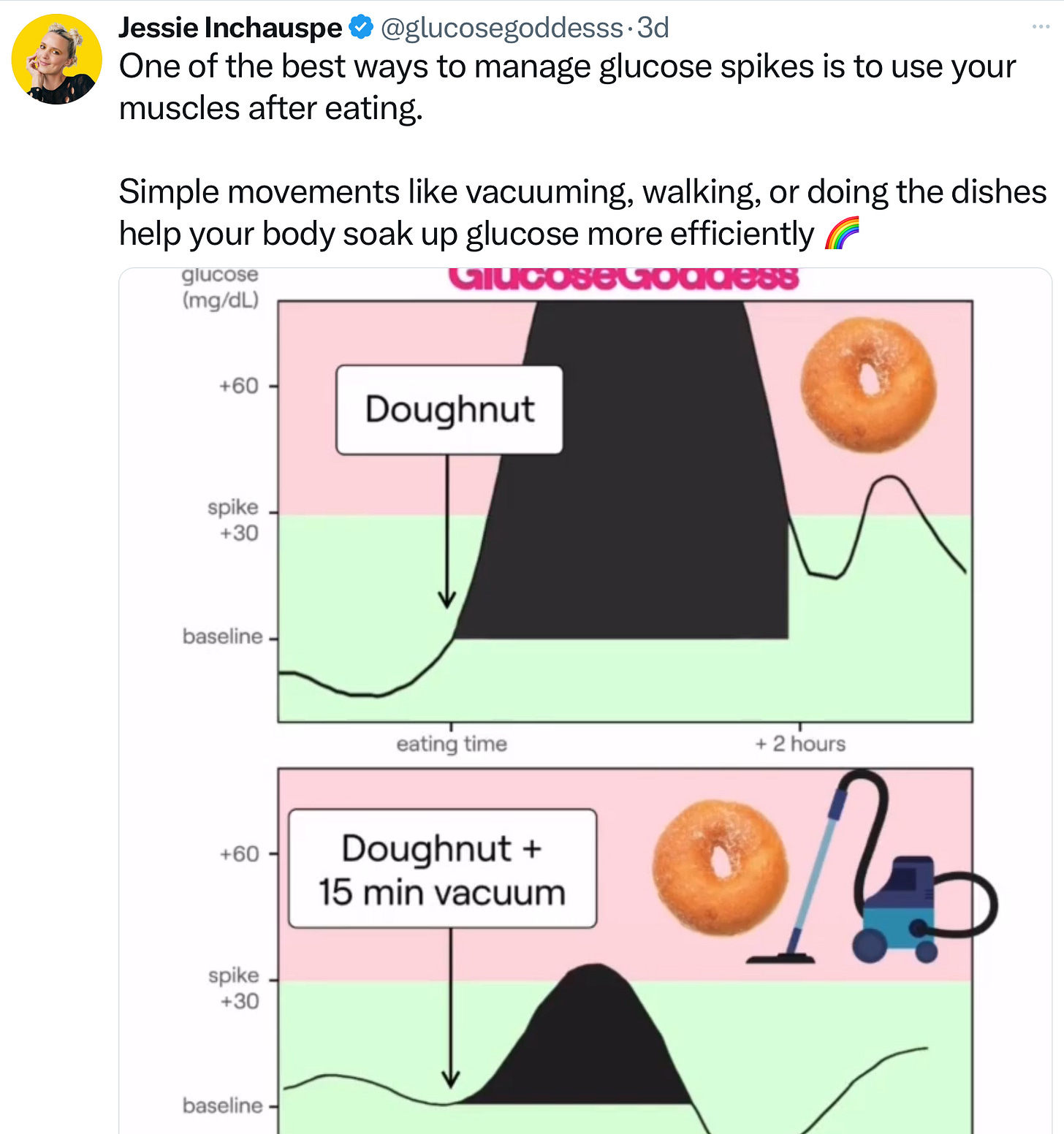“If walking were a pill, it would be the most impactful pill we have ever had in all of modern medicine.” — Dr. Casey Means
In 1965, a Japanese company created the first commercial pedometer and called it Manpo-kei. The name translates to 10,000 steps.1 In other words, 10,000 steps for better health was a fiction that was created to market a device. But now so many of our devices use it as the gold standard. For example, my Fitbit lets me know when I hit 10,000 steps.
So should you shoot for 10,000 steps a day? Yes! The company was onto something. The average American walks only 3,000 to 4,000 steps a day.2 That is simply not enough. Studies in the Journal of American Medical Association “show that walking 10,000 steps can improve cardiovascular health and reduce risks of both dementia and cancer better than any pill or injection currently available.”3
“The study in JAMA Neurology, published in September 2022, found that walking 9,800 steps per day was associated with steady declines in dementia risk, and even fewer steps than the 9,800 threshold were still associated with a decline. The study also found that greater walking intensity was related to significantly lower dementia risk. The companion study showed that for every 2,000 steps a day, you could lower your risk of premature death by 8% to 11%.”4
While walking a lot of steps is always important—as we get older, it is critical. Dr. I-Min Lee, a Professor at Harvard Medical School, conducted a study of 16,741 women between ages 62 and 101. She found that women that walk over 4,000 steps a day reduce their mortality by 41%! Those mortality rates progressively improved and started to level off around 7500 steps.5
Timing: Walking for 10 to 15 minutes after a meal really boosts the benefits of walking.
After a good meal, most of us want to rest on the couch. Resist that temptation. Walk first! Walking after eating helps with:
Gas and Bloating
Blood sugar
Sleep
Mental Health (mood)
Blood Pressure
Digestion
Weight loss
Risk of Heart Disease6
Even simple movement after eating is great. Jessie Inchauspe has spent much of her career studying how to manage glucose so we don’t get diabetes. For anyone struggling with glucose levels, her book The Glucose Revolution is worth reading. She points to the benefits of movement after eating in her tweet below.
10,000 steps might sound like a lot but it really isn’t—you don’t have to do it all at once. Break it up throughout the day. Walk after meals. Instead of emailing, go talk to someone. Take the stairs instead of the elevator.
Remember the added benefit for your sleep if you get out first thing in the morning and go for a walk. (See Rule 5). If you are really ambitious add a weighted vest and make it a full body workout (just start light).7 And get a device that keeps track of your steps to hold you accountable!
https://www.health.harvard.edu/blog/10000-steps-a-day-or-fewer-2019071117305
https://www.mayoclinic.org/healthy-lifestyle/fitness/in-depth/10000-steps/art-20317391#:~:text=The%20average%20American%20walks%203%2C000,a%20day%20every%20two%20weeks.
https://www.kumc.edu/about/news/news-archive/jama-study-ten-thousand-steps.html#:~:text=“For%20patients%20interested%20in%20weight,weight%20loss%2C”%20Jakicic%20said.
Id.
https://www.health.harvard.edu/blog/10000-steps-a-day-or-fewer-2019071117305
https://www.verywellhealth.com/walking-after-eating-8697719#:~:text=Walking%20after%20eating%20promotes%20multiple,have%20an%20underlying%20health%20condition.
https://www.eatthis.com/pros-and-cons-walking-with-weighted-vest/





